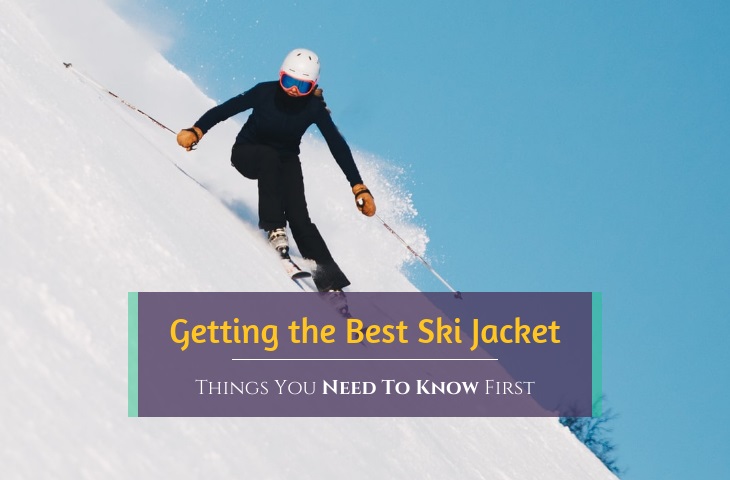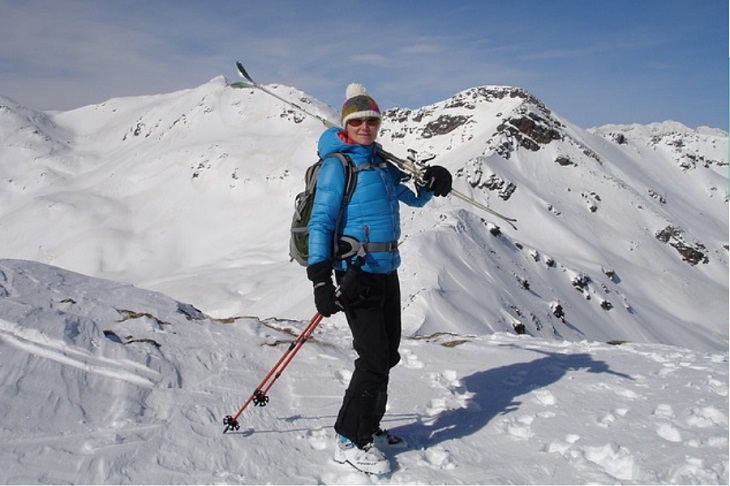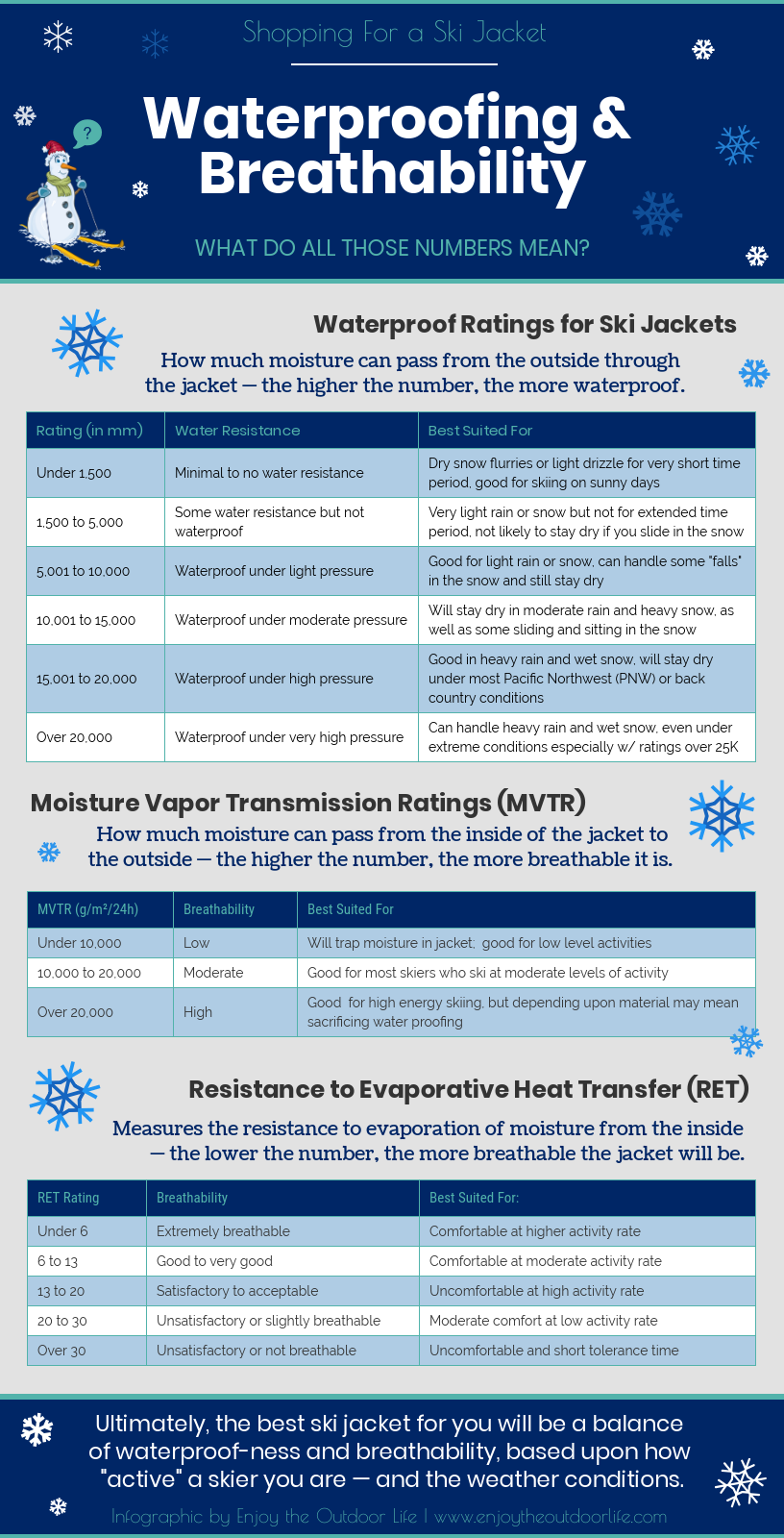Staying warm, dry and comfortable is important for enjoying your time on the slopes. Get answers to the most common questions about buying a ski jacket.
For more detailed information, as well as reviews for some of the best ski jacket brands, check out our article, What’s the Best Ski Jacket to Buy for the Money?

“To appreciate the beauty of a snowflake it is necessary to stand out in the cold.”
- Aristotle -
Skiing and snowboarding continue to be among most popular winter activities, and each year more people hit the slopes for the first time.
United States represents one of the world's largest ski markets, and has the highest 5-year average number of ski visits (over 50 million). Current reports show that there are 25 million Americans who know how to ski. [Source: 2019 International Report on Snow & Mountain Tourism]
During the 2018/2019 ski season, there were 59 million visits by skiers and snowboarders to the US's 475+ ski resorts. At the high school level, the number of students who are part of a cross country skiing team is on the rise.
Experienced and professional skiers know how to choose the best protective gear, but if you are relatively new to the sport, you may not what to look for when picking out things such as a good jacket for skiing.
One of the most common myths among "newbie" skiers is that in order to be warm, you need to have a big, bulky winter coat.
This is the furthest from the truth because this type of jacket makes it difficult to move comfortably, and could actually increase your your chance of injury. Not only that, if a jacket is too warm, you risk the chance of actually overheating when you are moving rapidly and exerting energy.
Today's ski jackets use modern technology and materials, to provide garments that are lightweight, breathable, waterproof and warm.
This article provides an overview of the most frequently asked questions when it comes to shopping for a ski jacket.
Shopping for a Ski Jacket - What Do All Those Numbers Mean? | Infographic by Enjoy the Outdoor Life
Feel free to share and use, as long as you provide proper credit.

Getting the Best Ski Jacket — FAQs

Which ski jackets are the best?
When looking for the best ski jackets, you want a coat that will keep the snow out while at the same time dispersing the heat and sweat your body generates while skiing. A layer with 20,000mm and above waterproofing and also 20,000 grams breathability rating should work pretty well. The best skiing jacket also comes padded for warmth retention. Sealed seams come in handy in enhancing the waterproofing of these jackets.
Another feature you will find in these jackets includes a moisture-wicking inner lining, which helps keep the body dry. They should feature abrasion-resistant materials on key areas of contact like the shoulders and elbows but should also not be too heavy. You should not forget to look out for small details like the pockets, internal cuffs and thumb loops, the hood, and even extra features like a powder skirt, to name a few.
► ► See our Best Winter Jacket for Skiing Guide for information about the best brands, as well as reviews.
What are ski jackets made of?
Skiing jackets come in a variety of materials, especially those that come with several layers. The most common materials include nylon and synthetic polyester, which acts as synthetic insulation for balanced warmth and also breathability. There are also ski jackets filled with down feathers for insulation.
The outer materials are usually treated with Durable Water Repellency, commonly referred to as (DWR). A good number of jackets also come in different makes of hard-shell, soft-shell, as well as 3-in-1 jackets with a removable insulated inner jacket.
Can you wash ski jackets?
Yes! Cleaning your gear after all the fun and loads of activities has a direct impact on their longevity. Materials like Gore-Tex lose their breathability and also waterproofing when they get dirty. This is because the fabric membrane gets clogged with dirt hindering the material from working effectively. Some garments allow you to use your washing machine, as described in the user's instructions. For some jackets, though, you may either hang them to dry or tumble dry on a warm, gentle cycle.
Just to be on the safe side, always read the provided instructions carefully on how to clean different skiing jackets thoroughly — especially if it’s a down ski jacket.
How warm are ski jackets?
They are made for extremely cold environments, so yea, ski jackets are pretty warm. When skiing, your body generates both sweat and warmth. Some jackets will feature fleece insulation to retain the warmth and also an inner synthetic moisture-wicking lining to wick off the body sweat. You will also find that a down-filled skiing jacket will do a much better job of keeping you warm during the cold temperatures in comparison with those with synthetic insulation.
How waterproof are ski jackets?
The best ski jackets have a good level of waterproofing! However, these levels vary greatly depending on the materials the ski jackets are made of. You can be able to gauge the level of waterproofing using a scale that ranges from 5000mm on the lowest level to 28000mm on the higher side. 0mm to about 1500mm should be shower resistant and can handle drizzle.
From 1500mm to around 5000mm is water-resistant and can handle light rain. These types of jacket materials work better in dry snow. Between 5000mm to 10000mm, we can confidently say they are waterproof and can handle moderate rain as well as regular snow. From 10000mm onwards, these jackets are very waterproof and can handle heavy rain and also suitable for wet snow.
What are breathability ratings of fabrics?
There are two main ratings for the breathability of fabrics: Moisture Vapor Transmission Rate (or MVTR for short) and Resistance to Evaporative Heat Transfer (or MVT for short).
MVTR measures how well air and moisture flow pass through a piece of material from the inside to the outside over time. The lower the number, the more waterproof a garment is – but that also makes it less breathable.
RET is how well a garment resists evaporation and is measured on a scale from 0 to 30. The lower the number, the more breathable a piece of clothing is.
How breathable are ski jackets?
The MVT breathability of any skiing jacket is rated in grams. The lowest rating is at 5000 grams, while the highest scores are 20000 grams and above. There is also another form of evaluation termed as RET value for breathability. With this form of scale, anything less than 6 is perfect breathability. At 13, we can term it as okay while any value above twenty being very poor or low breathability. For high energy riding and hiking, a poor breathability level is not recommended.
It is good to note that the higher the level of waterproofing of the apparel, the lower the level of breathability. When choosing a jacket, be careful to consider which one to prioritize on.
How should ski jackets fit?
Good question! The fit and cut that is best suited for you will significantly depend on the type of skiing that you opt for. How? While the slim fit which most people find more fashionable is best for cruising the smooth pistes, but if you are going for the more engaging and vigorous activities like hiking and exploring the untreated dense snow high in the alps, then perhaps the baggy cuts will do you better. These types of jackets are a perfect suit for freestyle skiers.
For many skiers, the regular fit cuts across the slim-fit and the loose fit, which offer the ideal balance between the slim-fit and the baggy fit, are the preferred style. This type of fit will give you some level of freedom of movement while skiing.

A Few Final Words... Safety First!

A great ski jacket will keep you warm and dry, and fit comfortably.

" When you're skiing, if you're not falling you're not trying.”
- Donald Rumsfield -
Staying warm and dry is the first line of defense when you engage in any winter sport. In addition to a good coat, don't forget a hat (that's where we lose most of our body heat), and a comfortable pair of winter gloves.
And of course, for safety you should wear a helmet and a good pair of ski goggles.
But real safety goes beyond that.
Video: How to use an avalanche beacon.
Tutorial: Backcountry Basics - Practicing with your Avalanche Beacon | Courtesy of Backcountry
We strongly recommend investing in a RECCO reflector. And if you can afford it, an avalanche beacon — especially if you are doing cross-county skiing, or going anywhere that's removed from large groups of people. According to the National Ski Areas Association, that's where most of the avalanche accidents and near misses happen. Better safe than sorry!
We talk about this more in our ski jacket buying guide.
In case you are wondering, we checked the facts about why you should wear a helmet when skiing or snowboarding!

